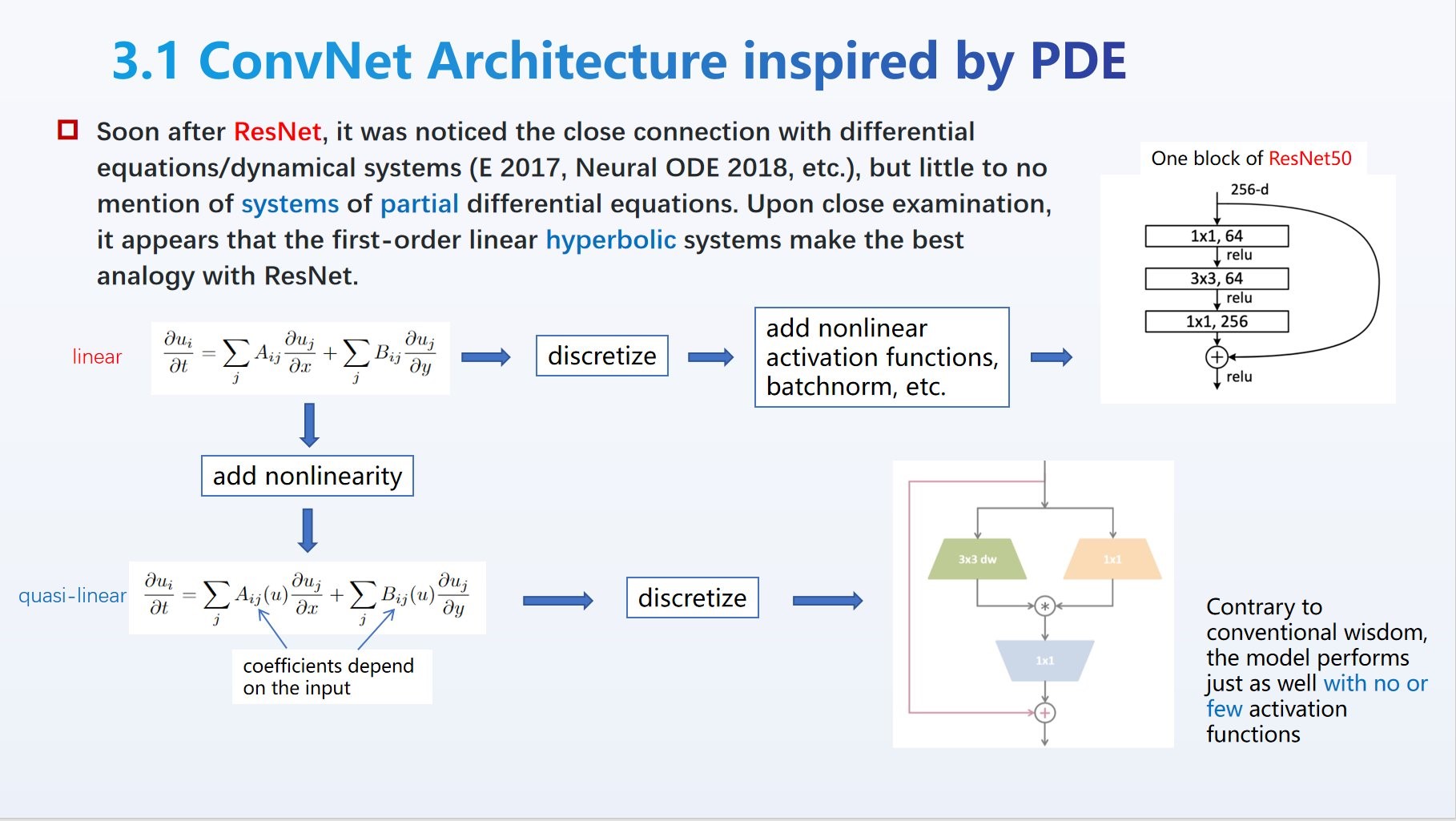|
--- |
|
datasets: |
|
- imagenet-1k |
|
metrics: |
|
- accuracy |
|
library_name: timm |
|
license: apache-2.0 |
|
pipeline_tag: image-classification |
|
--- |
|
|
|
# Model Card for Model ID |
|
|
|
Based on **quasi-linear hyperbolic systems of PDEs** [[Liu et al, 2023](https://github.com/liuyao12/ConvNets-PDE-perspective)], the QLNet makes an entry into uncharted waters of ConvNet model space marked by the use of (element-wise) multiplication in lieu of ReLU as the primary nonlinearity. It achieves comparable performance as ResNet50 on ImageNet-1k (acc=**78.4**), demonstrating that it has the same level of capacity/expressivity, and deserves more analysis and study (hyper-paremeter tuning, optimizer, etc.) by the academic community. |
|
|
|
|
|
 |
|
|
|
One notable feature is that the architecture (trained or not) admits a *continuous* symmetry in its parameters. Check out the [notebook](https://colab.research.google.com/#fileId=https://huggingface.co/liuyao/QLNet/blob/main/QLNet_symmetry.ipynb) for a demo that makes a particular transformation on the weights while leaving the output *unchanged*. |
|
|
|
*This modelcard aims to be a base template for new models. It has been generated using [this raw template](https://github.com/huggingface/huggingface_hub/blob/main/src/huggingface_hub/templates/modelcard_template.md?plain=1).* |
|
|
|
|
|
## Model Details |
|
|
|
### Model Description |
|
|
|
Instead of the `bottleneck` block of ResNet50 which consists of 1x1, 3x3, 1x1 in succession, this simplest version of QLNet does a 1x1, splits into two equal halves and **multiplies** them, then applies a 3x3 (depthwise), and a 1x1, all *without* activation functions except at the end of the block, where a *radial activation function* that we call `hardball` is applied. |
|
|
|
|
|
|
|
- **Developed by:** Yao Liu 刘杳 |
|
- **Model type:** Convolutional Neural Network (ConvNet) |
|
- **License:** [More Information Needed] |
|
- **Finetuned from model:** N/A (*trained from scratch*) |
|
|
|
### Model Sources [optional] |
|
|
|
<!-- Provide the basic links for the model. --> |
|
|
|
- **Repository:** [ConvNet from the PDE perspective](https://github.com/liuyao12/ConvNets-PDE-perspective) |
|
- **Paper:** [A Novel ConvNet Architecture with a Continuous Symmetry](https://arxiv.org/abs/2308.01621) |
|
- **Demo:** [More Information Needed] |
|
|
|
## How to Get Started with the Model |
|
|
|
Use the code below to get started with the model. |
|
|
|
```python |
|
import torch, timm |
|
from qlnet import QLNet |
|
|
|
model = QLNet() |
|
model.load_state_dict(torch.load('qlnet-50-v0.pth.tar')['state_dict']) |
|
model.eval() |
|
``` |
|
|
|
## Training Details |
|
|
|
### Training and Testing Data |
|
|
|
ImageNet-1k |
|
|
|
[More Information Needed] |
|
|
|
### Training Procedure |
|
|
|
We use the training script in `timm` |
|
|
|
``` |
|
python3 train.py ../datasets/imagenet/ --model resnet50 --num-classes 1000 --lr 0.1 --warmup-epochs 5 --epochs 240 --weight-decay 1e-4 --sched cosine --reprob 0.4 --recount 3 --remode pixel --aa rand-m7-mstd0.5-inc1 -b 192 -j 6 --amp --dist-bn reduce |
|
``` |
|
|
|
### Results |
|
|
|
qlnet-50-v0: acc=78.40 |